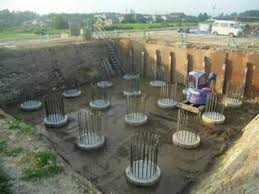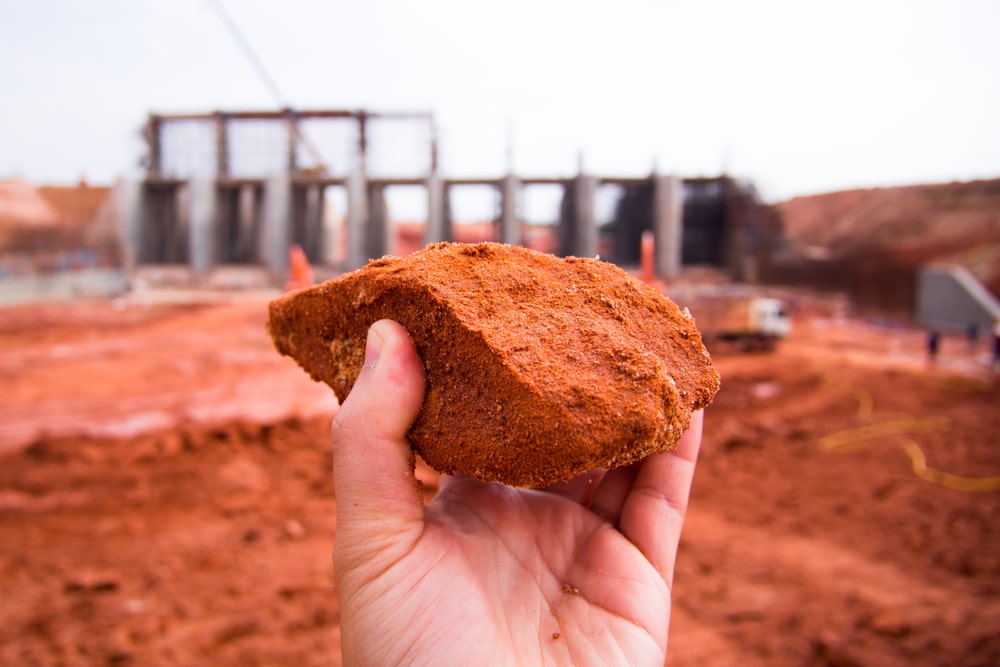Why All About Geotechnical Engineering Matters in Today's Facilities Growth
Why All About Geotechnical Engineering Matters in Today's Facilities Growth
Blog Article
Checking Out the Interdisciplinary Nature of Geotechnical Design and Its Influence on Ground Enhancement and Structure Design
The interdisciplinary nature of geotechnical engineering plays an important role fit cutting-edge ground improvement techniques and foundation design approaches. By incorporating insights from architectural, ecological, and geological disciplines, geotechnical engineers are equipped to attend to complicated dirt habits and site-specific obstacles. This joint approach not only improves the efficacy of methods such as dirt stabilization and vibrant compaction yet also ensures that jobs adhere to sustainability principles. What implications does this interdisciplinary harmony have for future growths in the area, specifically in the context of emerging building and construction innovations?
Review of Geotechnical Engineering
Geotechnical engineering is a vital branch of civil engineering that concentrates on the behavior of planet products and their communication with frameworks. This discipline encompasses the study of groundwater, soil, and rock, intending to recognize their properties and just how they influence the performance of civil design jobs. Geotechnical engineers analyze the hydraulic and mechanical habits of these materials to guarantee the stability and safety and security of structures such as buildings, bridges, and preserving wall surfaces.
The extent of geotechnical engineering includes site examinations, soil tasting, and screening, in addition to evaluation of dirt auto mechanics and rock auto mechanics. Engineers make use of sophisticated techniques to evaluate ground conditions, determine possible risks, and style efficient ground enhancement solutions. This may entail approaches such as soil stablizing, grouting, and making use of geosynthetics, which improve the stamina and toughness of the ground.
Additionally, geotechnical design plays an essential role in structure layout, identifying proper foundation kinds based on soil characteristics and loading conditions. By integrating strenuous testing and analysis, geotechnical engineers contribute substantially to the sustainability and resilience of framework, making certain that structures can hold up against environmental and operational tensions in time.
Trick Interdisciplinary Relationships

In addition, ecological engineering plays a crucial function in examining the influence of geotechnical activities on the bordering community. This partnership is vital for developing sustainable methods that reduce environmental degradation throughout excavation or ground improvement processes.
Additionally, the combination of geotechnical design with geology enhances the understanding of subsurface problems, promoting even more accurate site characterizations (geotechnical companies in south africa). This relationship aids in threat analysis, especially in locations susceptible to landslides or seismic activity, therefore educating danger reduction methods
Finally, advancements in modern technology have resulted in interdisciplinary partnership with information scientific research and geoinformatics. These fields add to boosted modeling and evaluation techniques, permitting a lot more accurate forecasts of dirt actions under numerous problems. Thus, the interconnectedness of these techniques improves geotechnical engineering, advertising advancement and efficiency in structure style and ground improvement.
Ground Renovation Strategies
Ground improvement methods are crucial methods employed to boost the engineering residential or commercial properties of soil, thereby enhancing its load-bearing ability and security. These strategies are especially important in locations where natural soil problems are insufficient for supporting structural lots or where ecological variables might endanger soil integrity.
Usual ground enhancement techniques consist of dirt compaction, which boosts thickness and lowers void rooms, and grouting, which includes infusing products right into dirt to fill spaces and bind particles with each other - geotechnical specialist. Various other strategies include the setup of soil nails and anchors, which provide extra assistance, and the use of geosynthetics to reinforce soil frameworks. Deep blending approaches, such as soil-cement columns, can likewise substantially improve the stamina check out here and tightness of weak soils
In addition, vibrant compaction and vibro-replacement methods are typically utilized to improve soil like it homes in situ. These approaches can alleviate problems connected to negotiation and liquefaction, especially in seismic areas. By using a mix of these ingenious techniques, geotechnical engineers can successfully deal with site-specific challenges, ensuring that the structure systems will certainly do properly under expected loading conditions, thus adding to total job success.
Foundation Layout Factors To Consider
Reliable structure layout considerations are vital for the durability and security of frameworks. A well-designed foundation should properly support the tons of the building while suiting dirt problems, environmental factors, and potential adjustments gradually. Key factors consist of soil bearing capability, negotiation qualities, and groundwater problems.
Comprehending the dirt profile via geotechnical examinations is necessary, as it educates the choice of foundation type-- be it shallow, deep, or specialized techniques such as pile foundations or floor covering foundations. The expected lots, consisting of real-time, dead, and environmental lots, need to be accurately calculated to ensure the structure can withstand potential failure mechanisms, such as gliding, overturning, or excessive settlement.
In addition, considerations for frost depth, seismic task, and potential soil liquefaction in seismic zones are crucial. Furthermore, drain and moisture control should be incorporated right into the foundation layout to mitigate concerns connected to hydrostatic pressure and dirt erosion.
Collaboration among architects, engineers, and geotechnical specialists is vital to establish an extensive foundation style that not only fulfills regulative requirements yet likewise makes sure the long-lasting efficiency and safety and security of the structure. Ultimately, comprehensive planning and innovative services are needed to address the complexities intrinsic in structure style.
Case Studies and Ideal Practices

One noteworthy study involves making use of deep soil mixing in a high-rise structure project in a seismic zone. This strategy considerably boosted the soil's toughness and stability, enabling a safer and more reliable foundation system (all about geotechnical engineering). The task highlighted the relevance of choosing appropriate ground improvement methods based on site-specific conditions, consisting of soil kind and loading demands
Another example is the application of dynamic compaction for boosting the bearing ability of weak dirts under an industrial center. This method successfully reduced settlement problems and enhanced general website efficiency, showing the efficiency of incorporating standard engineering look at these guys techniques with modern-day technology.
Ideal techniques stemmed from these instance researches stress the necessity of complete website investigations, collaboration among multidisciplinary groups, and the unification of innovative modeling devices. By embracing these lessons, geotechnical engineers can optimize structure designs and ground improvement techniques, inevitably causing much safer and a lot more sustainable construction results.
Conclusion
Finally, the interdisciplinary nature of geotechnical engineering dramatically boosts ground enhancement and structure design. By integrating principles from various engineering self-controls, customized techniques are developed to attend to particular challenges connected to soil residential or commercial properties and ecological impacts. This collective approach not just guarantees ideal structure security and safety however also promotes lasting building and construction methods. Continued expedition of these interdisciplinary relationships will additionally advance the area, leading to innovative solutions that react effectively to developing engineering needs.
The scope of geotechnical engineering includes site examinations, soil sampling, and screening, as well as evaluation of dirt technicians and rock auto mechanics. The connection in between geotechnical engineering and structural engineering is particularly crucial, as the efficiency of frameworks is greatly influenced by dirt actions and residential properties.Typical ground improvement approaches include dirt compaction, which enhances thickness and decreases void rooms, and grouting, which entails infusing products right into dirt to load spaces and bind particles with each other. Various other techniques consist of the installation of dirt nails and anchors, which give added support, and the use of geosynthetics to enhance soil structures. A well-designed structure must appropriately sustain the tons of the structure while accommodating dirt conditions, ecological aspects, and possible modifications over time.
Report this page